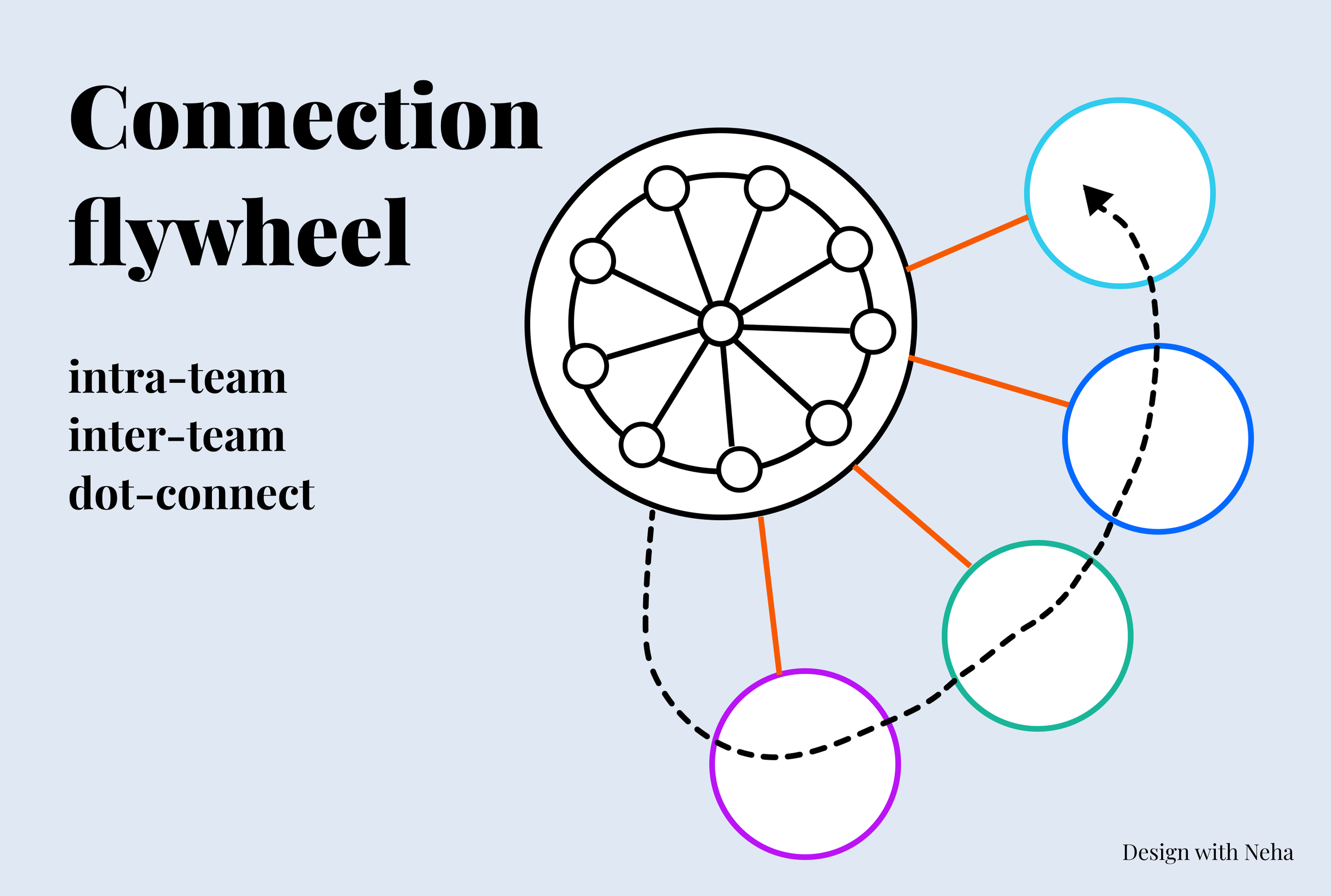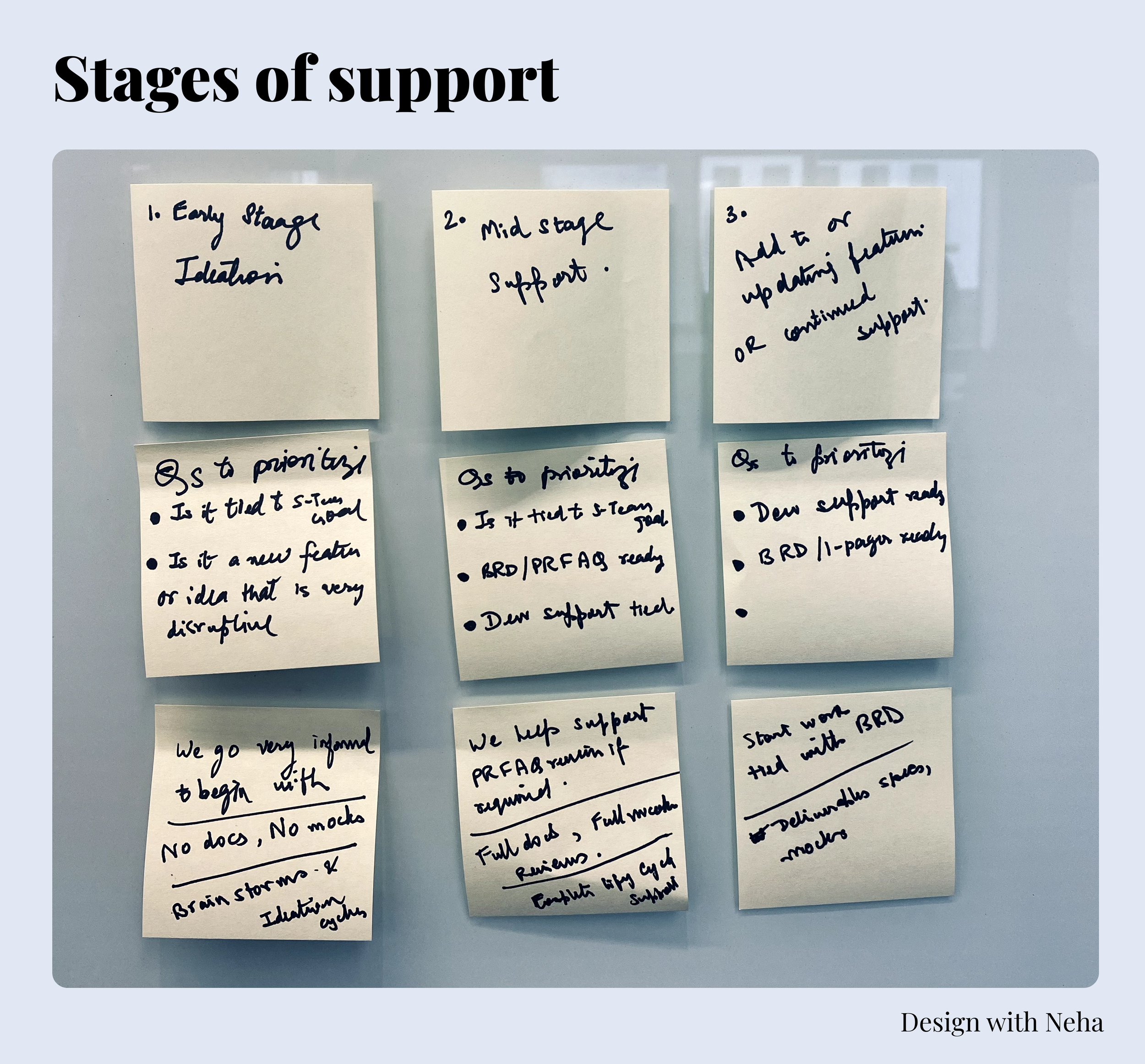How I manage UX teams
As a Design Manager, I’ve led large, multiple teams of UX Designers, Visual Designers, Content Writers, Video and Motion Designers across Creative, GenAI, Ads and Enterprise.
Company
Amazon Inc.
Years
4+
Role
UX Manager
Team size
10+
Connect – Strategize – Execute
As a UX Design Manager and Lead, I connect with empathy, strategize across orgs, and execute for success. Through failures and learnings I’ve built new teams across businesses that generate billions of dollars and impact millions of users.
Leading is not easy, but it gets harder when you start with ground zero and need to scale through ambiguities. This was the case when I was brought in to build and manage a new UX team in Amazon Ads.
My first step was acknowledging that this is hard work. It required a combination of drive to create a new vision and grit to go through the vision while ensuring the daily grind doesn’t pause. But even more importantly, it required ensuring that the team works together, grows and is motivated to deliver on the vision.
Leadership style in 3-min
Connect
When I was asked to lead a new team in Amazon, one of the biggest challenges was ensuring the team turned into a single unit. Every member of this new 10 people team was brought in from a different team and had not directly worked together before. They ranged from tenured seniors to new hires and included UX designers, UX writer and Motion designer.
Learning to work with each other, understanding why they were brought together, considering how strong they could be as a team: I aimed to help this newly formed team with this groundwork. I achieved this through organic and process-driven approaches.
I set up official weekly 1:1s along with informal chat mechanisms allowing different members opportunities to establish rhythms they were most comfortable with. Additionally, a weekly team bonding meeting that offered safe space to chat about issues, give each there formal kudos and brainstorm collectively to determine what did and did not work.
A combination of these activities gave each team member a sense of ownership and self-belief so they were empowered to make decisions while knowing they could always depend on me for support and ambiguous decisions.
Strategize
After I begin the process of connecting a team together, I start formulating and sharing the charter. For the new team that I began leading, the charter was undefined.
To this end, I began connecting with product and engineering leaders across 2 VP-led orgs and 5 Director-led teams. The goal of this new team was to support creative building and Gen AI, with over 50 product, 20 science and 100s of engineering stakeholders.
Through several discussions and 1:1s, the problem space gained definition. As I learned, I shared. I kept my team in loop and involved through my learnings, so that they were part of the journey of charter definition. I created a charter, vision and roadmap docs to ensure clear goal definitions for the team.
Steps 1 and 2 lead to ensuring that while everyday work solves the immediate problems, it builds up to the team vision. Due to the extensive and wide scope of this team that involved support for 4+ new Gen AI tools and 3 creative builders, it became important that every UX lead was able to focus on the day-to-day deliverables and support the agile launches.
I created 2 team-wide mechanisms (bar-raising and sprint ownership) to empower and guide the team while also ensuring cross-visibility to enable sync-ups, learnings and consistencies. These mechanisms became pilots for the larger UX org.
Creating clear swim lanes for each designer and establishing a defined system of intake requests were other structures that enabled deep support with a very small team.
Execute
I’ve hired, assembled and led design teams of various sizes over the past several years. Connect with me on design leadership and mentorship and I would love to chat!




